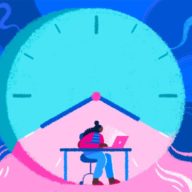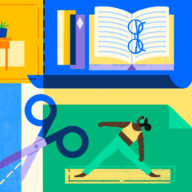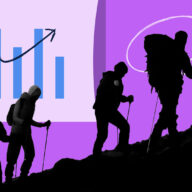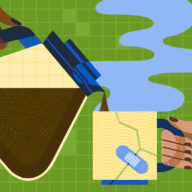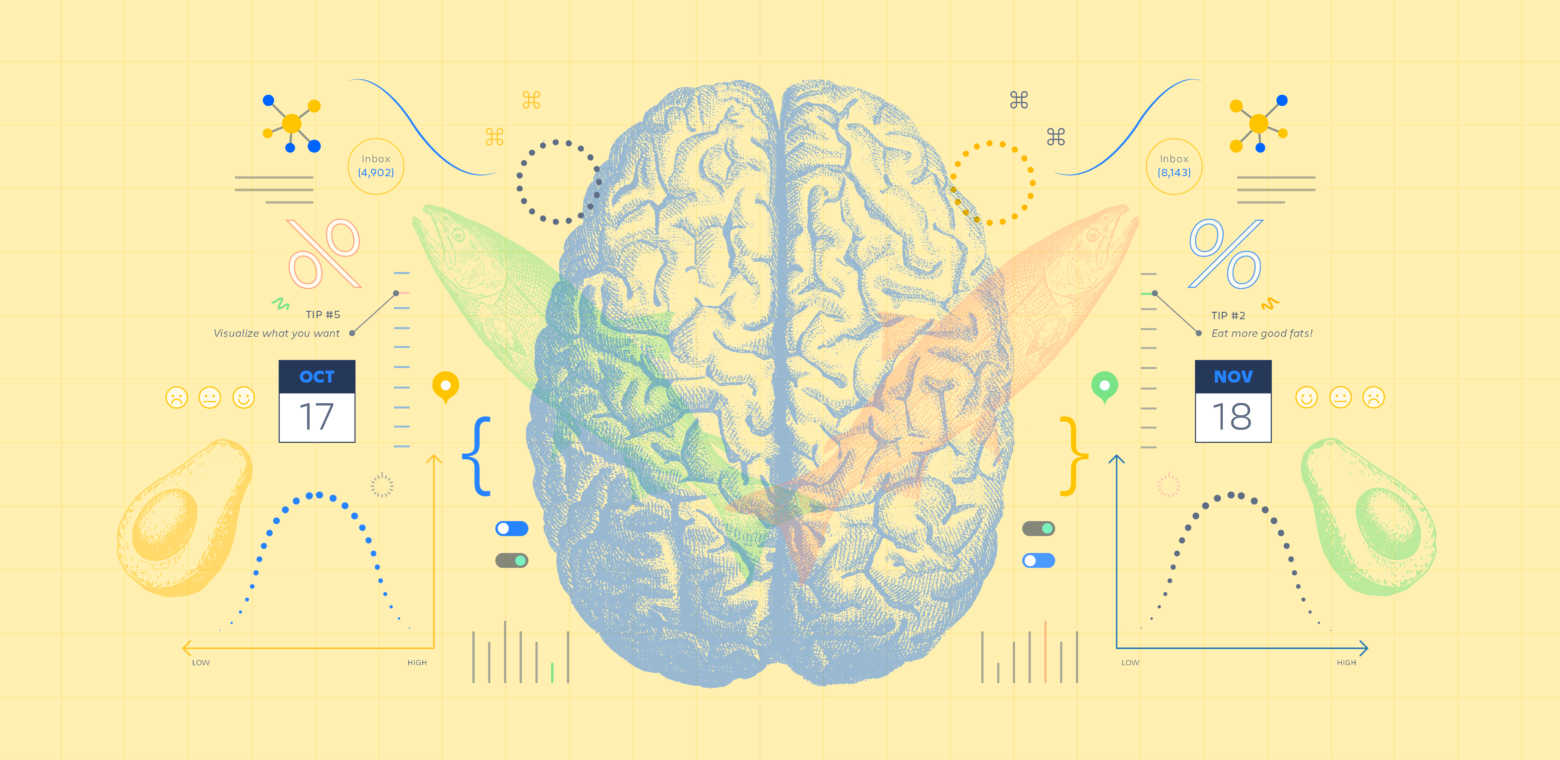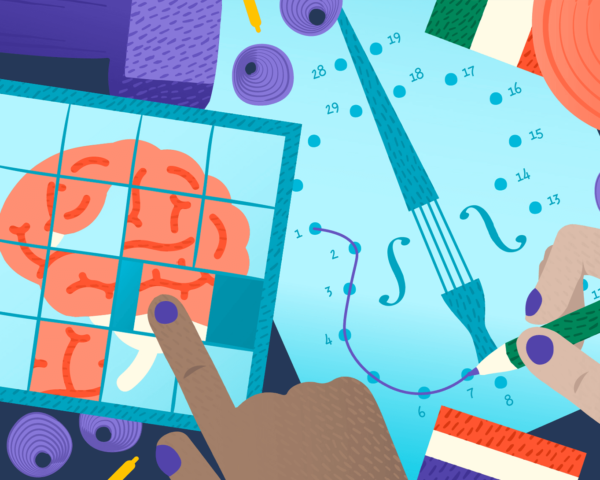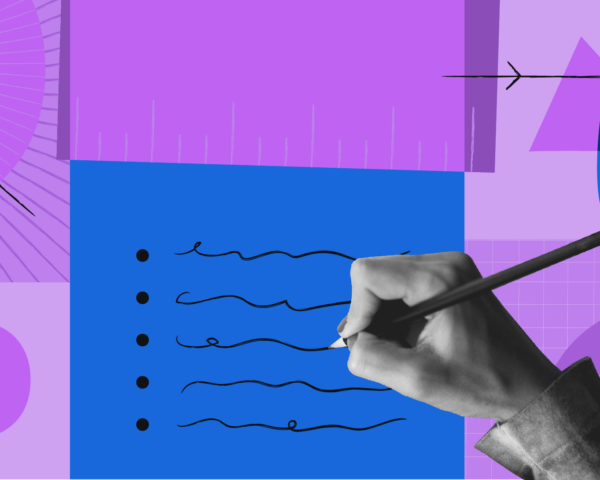Efficiency tools are everywhere. Software, planners, lists, you name it. There’s a huge industry around helping you be more well-organized and effective at work.
But you already have the most powerful efficiency tool available: your brain. Whether it’s your first job or you’re eyeing retirement, there are proven techniques you can use to amplify that big mass of neurons in your head. I spoke with a pair of scientists about a few methods that can break you out of a multitasking rut and put you on the path to success.
1. Tap into your brain’s executive suite
The first step is to get familiar with your brain’s basic cognitive functions and how to harness them for productive good. The executive functions of the brain include:
- Reasoning
- Problem-solving
- Planning
- Execution
Sounds like the ideal combination for workplace productivity, right? In her book The Source: The Secrets of the Universe, the Science of the Brain, neuroscientist Dr. Tara Swart identifies these higher functions help you get work done by regulating your emotions, suppressing your biases, switching tasks, solving complex problems, and thinking creatively.
“It can be tough to get the most out of those functions where your day is filled with repetitive tasks, long to-do lists, and constant interruptions,” Swart said. “That throws your brain into low-power mode, where its main job is to get you to the end of the day safely. There’s no room for the valuable functions — collaboration, trust, risk-taking — that help you work at the next level.”
There are some easy steps you can take to give your brain the environment it needs to operate more like a boss and less like a worker bee.
Sleep
I know you’ve heard this one before, but here’s why sleep is so important to your productivity. Your sleep is prime cleaning time for your brain, where it processes the issues from that day and makes room for new information and memories. Swart recommends that you ignore those folks who claim they can get by on 4-5 hours per night. Seven to nine hours per night is more like it. To settle your brain down more quickly, skip the alcohol before bed and stop looking at all your devices’ screens for at least an hour before you hit the hay.
Eat
Even though your brain weighs just 5-6 pounds, it pulls in 25-30 percent of what you eat for nourishment. A healthy diet builds glucose, which fuels the brain as we take on activities that are completely new and don’t come naturally to us. “That boost in fuel creates new pathways in the brain that can help it overcome previously existing biases,” Swart said. You might be more likely to trust someone on deadline or hire that new person who just might make all the difference. Swart suggests a diet high in salmon, avocado, eggs, nuts and seeds, and coconut oil.
Drink
In your nervous system, signals speak to each other through synapses. When you don’t drink enough water (or, drink too much alcohol), those synapses lose a bit of plasticity. To keep the connections firing at the right rate, your body needs to be well-hydrated. Aim for about 16 ounces of water for every 30 or so pounds of body weight.
Move
It can be tough to get in physical activity at the office, but moving around and getting your breath going helps more oxygen get to your brain. Even a short walk can increase growth factors in your brain and make it easier to grow new connections. Research has shown that standing burns 0.15 calories more per minute compared to sitting. Plus, you’re more likely to move around more while standing up.
Simplify
For all its marvels, the brain operates better when its choices are simplified. Multitasking — to the extent that anyone can truly do it — keeps you in that “doing” mode and less in the “thinking” mode. Reduce your choices and settle on a morning routine to get your brain off to a good start. Your brain’s neurotransmitters such as serotonin take a natural dip around 3 pm, so put your most cognitively challenging work early in the day when your brain energy is at its peak.
2. Be energized, but not overstimulated
When it comes to being productive at work, you can reach back more than 100 years to some research that explains a lot about how to maximize your potential. Dr. Art Markman, psychology professor and author of Bring Your Brain to Work: Using Cognitive Science to Get a Job, Do it Well, and Advance Your Career, likes to refer to the Yerkes-Dodson Law, which was first explained back in 1908 and looks at the relationship between how energized you are to do something and your performance.
It makes sense that if you’re not energized or excited about doing something, then you’re not very productive. Similarly, as a deadline closes in, you get energized to meet it and your productivity goes up. But the interesting part is that it’s possible to get too energized and hurt your performance. A certain amount of stress is good, but too much turns into crippling anxiety.
“At some point, you continue to get energized. You’ve literally got energy flowing through your motivational system and you can actually get over-aroused to the point where you’re no longer productive,” Markman says. “You slip into what you could think of as panic.”
Staying at the top of the curve where you’re energized, but not over-stimulated, requires knowing how your work best. Like me, are you a planner who gets things in order right away? Or are you a procrastinator who thrives under the pressure of a deadline? It’s important to know yourself to be able to maintain a level of effectiveness throughout a project. And it’s even more important that a manager recognizes how each person on their team approaches work so they can set the team up for success.
3. Use the power of neuroplasticity
One of the biggest topics in cognitive science over the last 20 years is the concept of neuroplasticity: the ability of the brain to change over time. Scientists used to think that your thinking was pretty malleable until age 18 or so, but more recent studies have shown that there are things you can do to keep your brain flexible throughout adulthood.
Understanding the basics of mental flexibility in the workplace means mastering the mental challenge of learning something new every day. It’s similar to how a new musician learns to be part of a band. They start by listening more than they play, they stay open to new experiences, and they don’t worry about wowing people right away. Taking the same approach at work is what Markman calls using your “jazz brain.”
“It takes time to develop expertise,” says Markman, who took up playing the saxophone in his 30s. “And expertise allows you to adapt to a new situation on the fly. That’s crucial when things go wrong. Because they usually go wrong in a new way.”
4. Hone your emotional awareness
A big part of being effective at work, of course, is being a good communicator. So much of today’s work is about sharing information across email, text, writing, and speech. When you’re in the same space, you can pick up a lot of non-verbal cues that add a lot of context to the conversation. But with distributed teams who communicate heavily by text, that can be a challenge.
Rather than lean on the magic of technology for communication, Swart suggests you tap into your emotional side. She ranks mastering your emotions as the top brain pathway that correlates to important ways of thinking. That doesn’t mean suppressing your emotions at the office, but rather being more aware of what you’re feeling and how others are reacting.
“It’s about understanding the importance of what’s going on interpersonally. So often, that’s the explanation for why things go wrong,” Swart says. “If you pay attention, give eye contact, really listen, ask open-ended questions and not interrupt people and not be on your device when someone is talking to you — that can be absolutely game-changing in a team or a business.”
5. Visualize what you want
At some point, you’re likely to find yourself in a leadership position at work. That could be as a supervisor or the person heading up a project. One unexpected way to guide your team or project to success is to visualize it. If that sounds a little too New Age-y to you, don’t worry, there’s science behind how it works.
One of the ways your brain protects you is through a strong filtering system. When you’re taking in a lot of information, anything that’s not critical to you at that time or for your long-term survival is filtered out. Of the information that’s left, the brain tags it in order of importance. That combination leads to selective attention, which in this case can be good. It means you only pay attention to those things that get by the filter and are tagged.
So as a leader, if you prime your brain with images of things that you want — success for your team, a winning project, etc. — then you’re more likely to notice things related to your goal and grasp the opportunity to make those things real. One easy way to put those images where your brain will take notice is to create a vision board.
“But I don’t call them vision boards, I call them action boards,” Swart told me. “Because it’s not enough to just make this image and then sit and home and wait for the checks to come in. It’s about looking at that board repeatedly and doing things as often as you can to move yourself toward those goals.”
Bonus hacks!
Of course, there are more ways to hack your productivity – some of which have little to do with hard-core neuroscience. Find out which hacks might suit you best with this short quiz.





 )
) 









